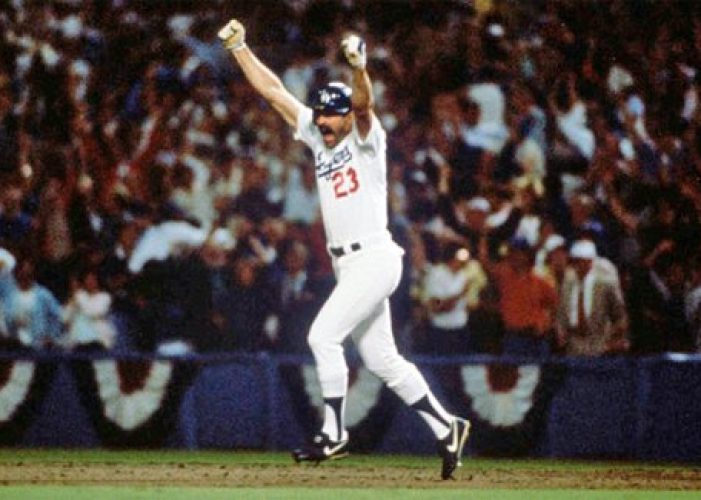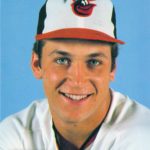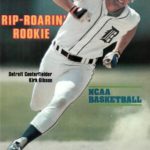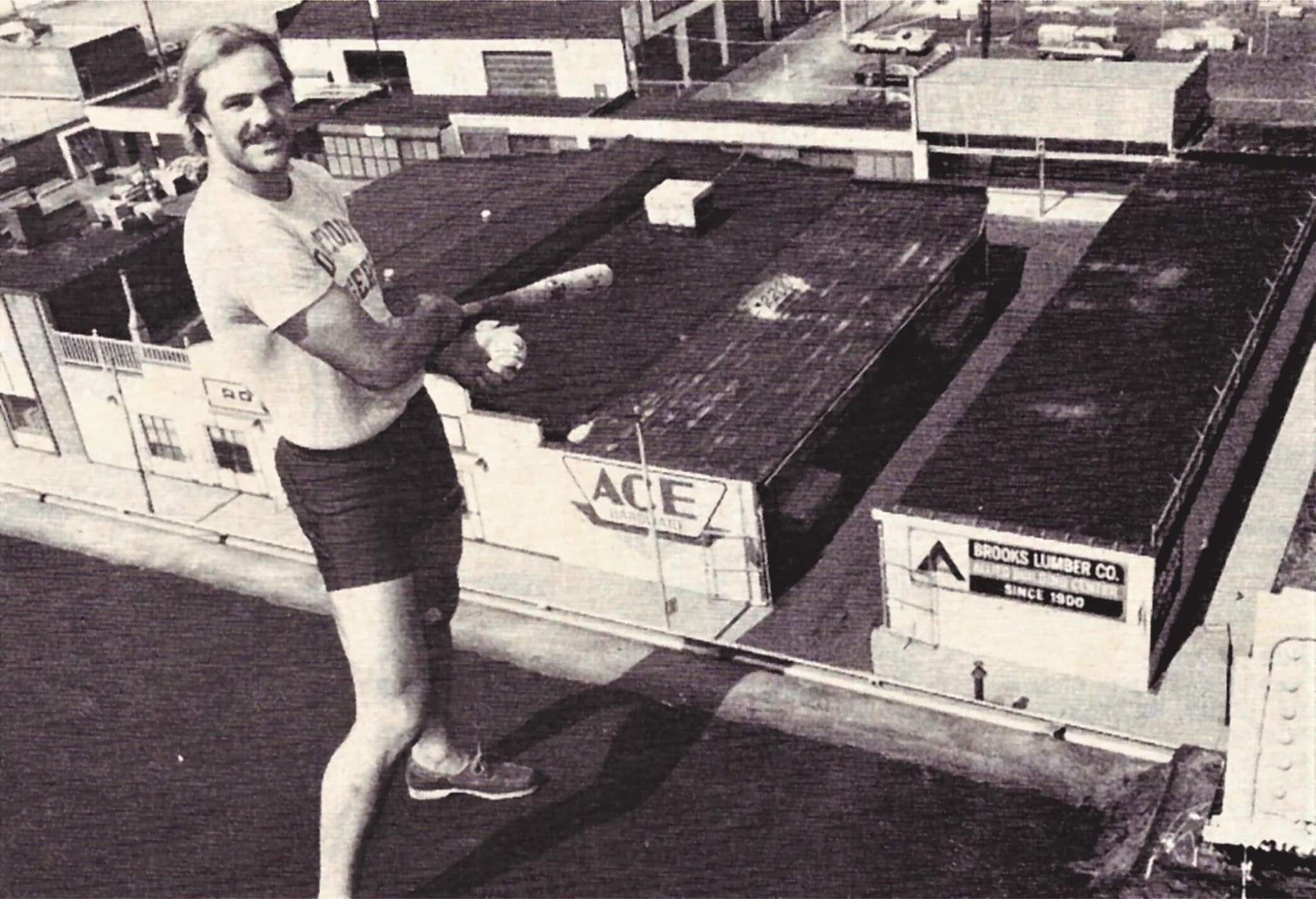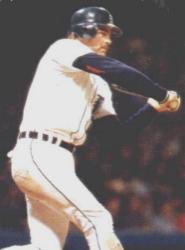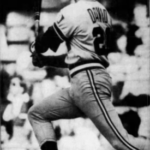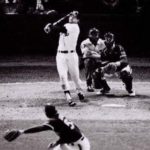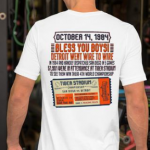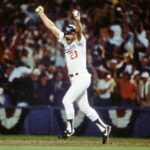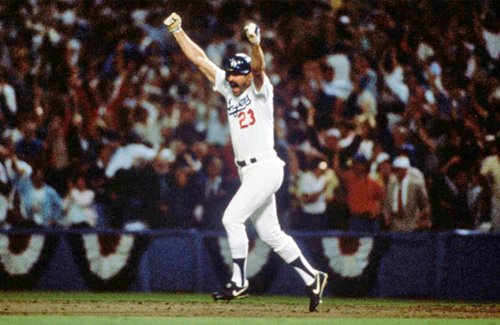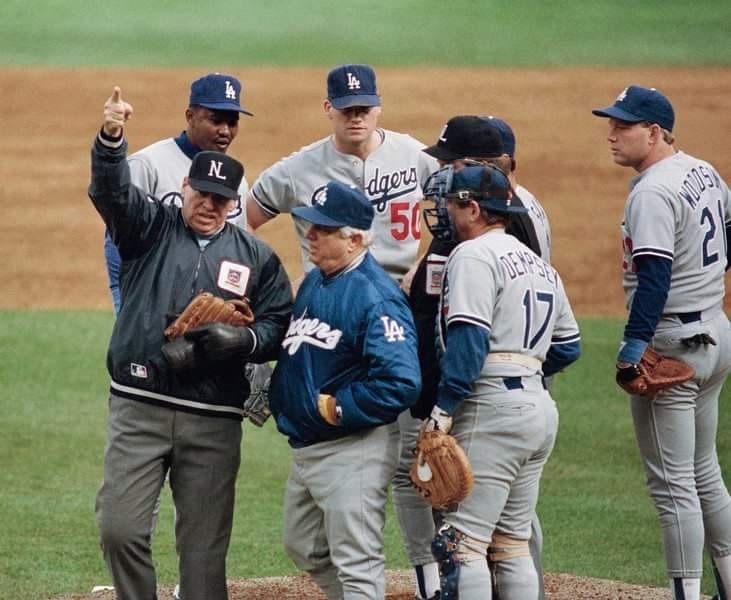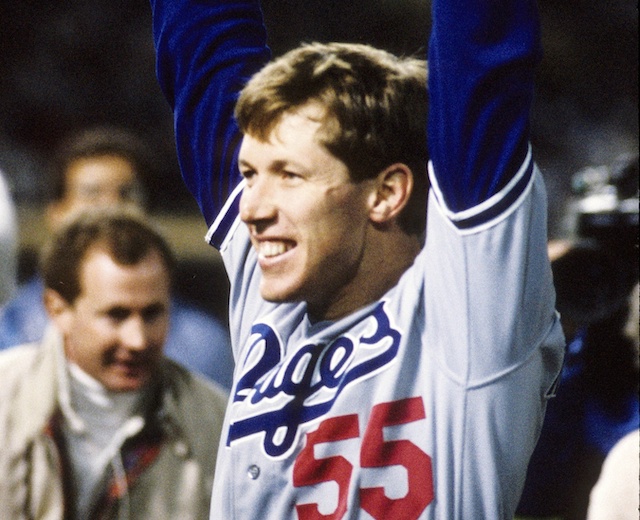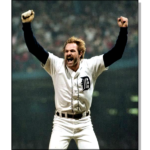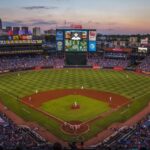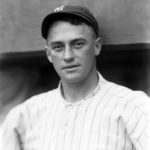Kirk Gibson
Position: Outfielder
Bats: Left • Throws: Left
6-3, 215lb (190cm, 97kg)
Born: May 28, 1957 in Pontiac, MI
Draft: Drafted by the Detroit Tigers in the 1st round (12th) of the 1978 MLB June Amateur Draft from Michigan State University (East Lansing, MI).
High School: Waterford-Kettering HS (Waterford, MI)
School: Michigan State University (East Lansing, MI)
Debut: September 8, 1979 (Age 22-103d, 11,854th in MLB history)
vs. NYY 1 AB, 0 H, 0 HR, 0 RBI, 0 SB
Last Game: August 10, 1995 (Age 38-074d)
vs. TEX 2 AB, 0 H, 0 HR, 0 RBI, 0 SB
Full Name: Kirk Harold Gibson
Nicknames: Gibby
Twitter: @23KGibby
View Player Bio from the SABR BioProject
Relatives: Brother-In-Law of Dave Rozema
Notable Events and Chronology for Kirk Gibson Career
Intro
Kirk Gibson never played in an All-Star Game, but he was involved in several dramatic moments, including hitting one of the greatest World Series home runs ever. He won titles in both leagues, garnered the 1988 NL MVP based largely on his winning attitude and aggressive play, and starred for his hometown Tigers in two stretches. He was one of the central figures effected by the 1986-1987 collusion against free agents. He left Detroit after a falling out with the front office, owner Tom Monaghan stating “He’s a disgrace to the uniform, with his beard and scruffy look.” But six years later he was back in Motown, and after his playing career he joined the organization as a special instructor, announcer and coach.
Biography:
Joining the Dodgers as a free agent in 1988, Gibson’s intensity spurred the team to a World Championship highlighted by his fabled Hollywood-like game-winning home run in the Series opener. Kept out of the lineup by a leg injury, he pinch-hit with two outs in the bottom of the ninth with Mike Davis on base and the Dodgers down 4-3. Visibly wincing on each swing, he fouled off four pitches before he hit a slider into the right field stands off the A’s immaculate relief ace Dennis Eckersley and limped around the bases while pumping his fists. It was his only at-bat in the Series.
Gibson was also a hero in the LCS, with a 12th-inning solo shot to beat the Mets in Game Four, a three-run homer in Los Angeles’ 7-4 Game Five victory and the game-winning RBI in the Game Seven clincher on a first-inning sacrifice fly. Not a good fielder, he displayed his defensive approach in Game Three when, playing on a sloppy field, the gimpy Gibson made a crucial slipping, lunging catch in the mud while nearly falling down three times in pursuit of the fly ball. Despite unspectacular numbers like a .290 batting average with 25 home runs and 76 RBIs, Gibson won the National League MVP in 1988 (in the process becoming the first player since the inception of the All-Star game to claim the award without a single All-Star selection in his career), an honor bestowed as much for the determined, fiery attitude he brought to the club as for his production at the plate. In a celebrated incident on the first day of spring training, Gibson grew enraged when clubhouse prankster Jesse Orosco smeared the sweatband of his cap with eye black, his reaction setting the tone for the professionalism and competitiveness that would fuel the Los Angeles’ pennant drive.
An All-America football flanker and baseball outfielder at Michigan State University, Gibson was Detroit’s number-one pick in the June 1978 draft. His combination of raw power and speed led the ever excitable Sparky Anderson to dub him “the next Mickey Mantle.” Injuries restricted his progress until 1984, when he became the first Tiger to hit 20 home runs and steal 20 bases in the same season, and the first with at least 10 doubles, triples, homers, and steals since Charlie Gehringer in 1930. He was the MVP of the ALCS, then led the Tigers with seven RBI and three steals in their World Series steamrolling of San Diego, including a pair of home runs in the decisive Game Five.
Though Gibson topped out at 29 homers in 1985, his awesome power resulted in several tape-measure blasts. In 1986 he set a major-league record with five consecutive game-winning RBI and was honored three times as the AL Player of the Week. Gibson’s below-average defense resulted in a shift from right field to left in 1987. His game-tying home run and game-winning single at Toronto on September 27, 1987 enabled the Tigers to avoid a crippling sweep, and eventually to win the AL East title on the final day of the season.
Following his 1988 MVP campaign, Gibson’s chronic leg problems began catching up to him, limiting him to a combined 160 games his last two years in Los Angeles. He signed with Kansas City in December 1990, was traded to Pittsburgh for pitcher Neal Heaton in March 1992, but was released that May. The next season he re-joined the Tigers, where he spent his last three years. Though mostly an injury-plagued shadow of his former self, he did clout 23 home runs with 72 RBIs during the strike-shortened 1994 season.
Gibson Facts – Best Season
Gibson arrived in LA like a fish out of water. An outdoorsman from the Midwest, Gibson failed to fit in to the California beach lifestyle, but he did bring a winning attitude. He took charge of the clubhouse and led one of the least talented teams in history to the World Series. He blasted two game-winning home runs in the playoffs against the Mets and then delivered his storied “The Natural” longball off Dennis Eckerlsey in Game One of the World Series. During the regular season he scored 106 runs, finishing in the top ten in home runs, slugging, and runs scored. Gibson produced 46 multi-hit games, and his .860 OPS was 4th best in the loop, trailing Darryl Strawberry, who many thought should have won the MVP. The fiesty Gibson swiped 31 bases in 34 attempts and saved his best hitting for clutch situations. His homer to win the first game of the 1988 Series was his only at-bat of that Fall Classic.
Factoid 1
Kirk Gibson hit at least one home run against every major league team except the Tigers and the Dodgers.
Old Man Gibby
After un-retiring, Gibson rejoined the Tigers for the 1993 season. His intense drive and spirit energized the club – which hadn’t seen the playoffs since he had left six years earlier. As late as June the Tigers were in first place. “I’m here to be a world champion. I said that when I signed. Everybody looked at me like I was nuts. Nobody thought we’d be where we are now, but I talked as if we would be here.” The Bengals, who had lost 87 games the previous season, improved to 85 wins and finished 10 games back.
Chasing 100
Twice in his career Gibson drove in 90 or more runs, but he never reached the 100-RBI mark. In 1994 he was on pace to eclipse the century plateau when the strike ended the season. Gibby had driven in 72 runs in just 98 games (330 at-bats). His total was just four RBI less than he had in his ’88 MVP campaign. Had the 37-year old Gibson been able to reach 100-RBI he would have become the oldest player to reach that level for the first time in his career.
Notes
Gibson is the only MVP winner to never officially appear on an All-Star roster. However, he was asked to be on the team twice — in 1985 by Sparky Anderson and in 1988 by Whitey Herzog for the National League. Both times Gibson refused to go to the mid-summer classic, opting to go hunting and spend time with his family.
@ET-DC@eyJkeW5hbWljIjp0cnVlLCJjb250ZW50IjoicG9zdF90YWdzIiwic2V0dGluZ3MiOnsiYmVmb3JlIjoiTGVhcm4gTW9yZSBhYm91dCB0aGUgdGVhbXMsIHBsYXllcnMsIGJhbGwgcGFya3MgYW5kIGV2ZW50cyB0aGF0IGhhcHBlbmVkIG9uIHRoaXMgZGF0ZSBpbiBoaXN0b3J5IGp1c3QgY2xpY2sgdGhlIHRhZ3MhICAiLCJhZnRlciI6IiIsImxpbmtfdG9fdGVybV9wYWdlIjoib24iLCJzZXBhcmF0b3IiOiIgfCAiLCJjYXRlZ29yeV90eXBlIjoicG9zdF90YWcifX0=@

